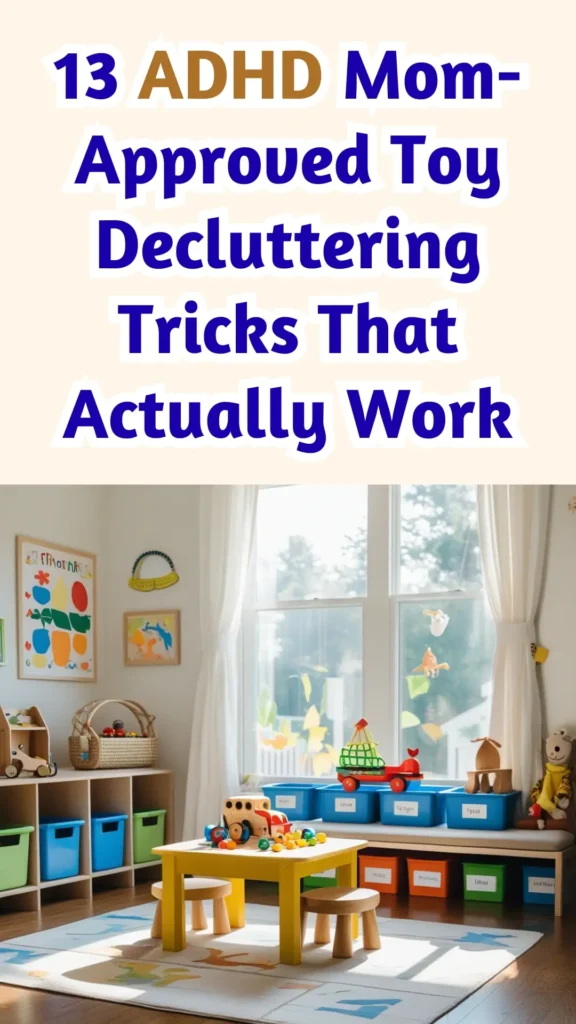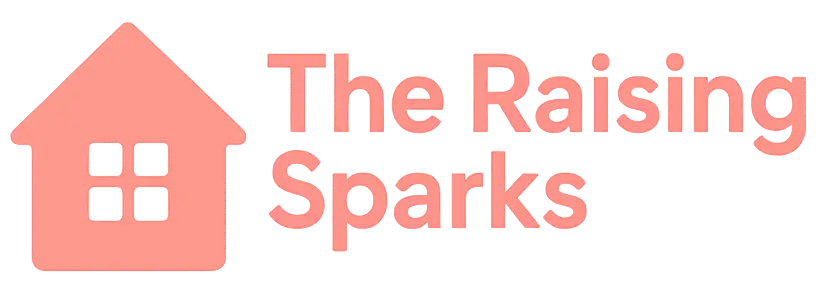Finally! Real-world strategies that work with your ADHD brain, not against it. Save this pin for later!
Let’s just be honest here.
The toy clutter can feel like a living thing.
It spreads. It multiplies. It hides in corners and under couches.
You finally clean it up and (poof!) it’s back five minutes later like it never happened.
If you’re an ADHD mom, you know exactly what I’m talking about.
There’s no such thing as “just tidy it real quick” when your brain is already juggling 38 tabs of mental load, dinner prep, and possibly a meltdown happening in the background.
This post isn’t here to lecture you or give you Pinterest-perfect before-and-after shots.
It’s a real-world collection of toy decluttering tricks. Tried, tested, and approved by moms with ADHD brains who just want to feel less defeated by the chaos.
And if your child also happens to have ADHD? These strategies still work. Even better, actually.
But they’re just as effective if they don’t, because at the end of the day, you’re the one managing the mess.
So if you’ve been feeling like the toy clutter is slowly winning, here’s what helped me (and a whole lot of other ADHD moms) take some control back.
In small, sustainable ways that actually stick.
Don’t forget to save this pin for later so you can come back to it when you need it!

1. Rotate toys to limit access (and mess)
Instead of having every toy available all the time, pack away half into storage bins and rotate them every few months.
Fewer choices equals less overwhelm for everyone.
Bonus? Kids actually play more creatively when they’re not overstimulated by options.
And it feels like Christmas every time you rotate things back in.
2. Use the “Poop Rule” (yes, really)
Keep a small basket of toys in the bathroom. Only the ones you’re okay with getting wet or possibly… you know.
This sounds ridiculous, but it limits what gets dragged in there, and gives your kids a focused distraction during potty time.
Containment matters. Especially where chaos multiplies.
3. Zone the playroom like you would a kitchen
Think: pretend play area, reading nook, building blocks zone, art supplies corner.
When everything has a vibe and a place, it’s way easier to clean up. And way easier for your brain to visually process.
No need to go full Montessori. Even taped squares on the floor count as zones.
4. Try the “One Toy Category at a Time” rule
Start this young if you can, but it’s never too late.
Only one type of toy out at a time. When that one’s cleaned up, a new one can come out.
This takes practice, but even semi-enforcing it cuts the visual noise dramatically.
Especially helpful if your brain panics at giant messes (hi, same).
5. Use removable picture labels, not just words
Especially helpful if your kids aren’t reading yet, but honestly? Even for you.
Label bins with pictures so everyone (yourself included) knows where things go.
ADHD brains love fast visual cues. Bonus if you make the labels fun or colorful. Your brain might actually want to use them.
6. Store toys where kids can actually reach them
If clean-up means lifting a bin that weighs more than your child or opening a closet they need a step stool for… it’s not gonna happen.
Lower bins. Open shelves. Soft-sided baskets.
Easy access equals easier cleanup. For them and you.
7. The “Invisible Toy Test”: If it’s buried, does it matter?
Once a month (or honestly, whenever you hit your breaking point), look at what hasn’t been touched in weeks.
If it’s buried under other toys or hidden in the back of a closet, your kid probably doesn’t even remember it exists.
That’s a good candidate for donation, rotation, or (if it’s broken or missing pieces) the trash.
8. Keep a “Goodbye Basket” out all year
Instead of waiting for big cleanouts, keep a bin somewhere discreet where you can quietly toss toys that no longer spark joy (for them or you).
Once it fills up, you can donate it or do a fast review before letting go.
Small, constant letting go beats the dreaded all-day declutter.
9. Use hidden toy storage that blends with your real life
Storage ottomans. Benches with bins. Coffee tables with drawers.
Use furniture that hides the toy chaos in plain sight. Because let’s be real, sometimes the toys are in the living room, no matter how hard we try.
Make your space work for you, not the other way around.
10. Do a “Toy Debris Sweep” weekly
Tiny plastic pizza slices. Single doll shoes. Unidentified sparkly bits.
These accumulate faster than actual toys.
Do a quick sweep once a week and be ruthless about tossing broken, orphaned, or just plain annoying pieces.
You don’t need to keep everything to be a good mom.
11. Skip the Pinterest-perfect storage system
Matching bins are cute. But if the lid is annoying or it takes more than 5 seconds to use, it won’t get used.
Function beats aesthetics. Every time.
ADHD-friendly storage equals easy to access, easy to put away, and doesn’t require instructions.
12. Designate a “Toy Zone” and stick to it
Whether it’s a corner, a room, or just one half of the living room, define where toys are allowed to live.
That way, if (okay, when) they spread… you have a clear visual boundary to rein it back in.
Helps your brain, helps your kid, helps your living space.
13. Be okay with “good enough”
Some days, the floor will be covered. Some days, cleanup will mean shoving things into bins so you can walk without stepping on something sharp.
That’s not failure. That’s reality.
Decluttering isn’t about perfection. It’s about feeling less overwhelmed, more often.
Start where you are, do what you can, and let the rest be what it is.
Final thoughts
If you’re reading this, you’re probably tired. Frustrated. Maybe even a little embarrassed at how out of control the toy situation feels sometimes.
I just want you to know: you’re not alone. Your struggle is real.
And it’s not because you’re lazy or messy or failing. It’s because ADHD brains weren’t built for this kind of constant, repetitive upkeep.
But you can make it easier. You can create a space that feels more manageable, one toy bin at a time.
Whether your child has ADHD or not, these tricks are here to support you. The mom managing it all, in a brain that already has a lot going on.
So pick one. Just one. Start there.
And come back when you’re ready for another.
You’ve got this. Mess and all.
